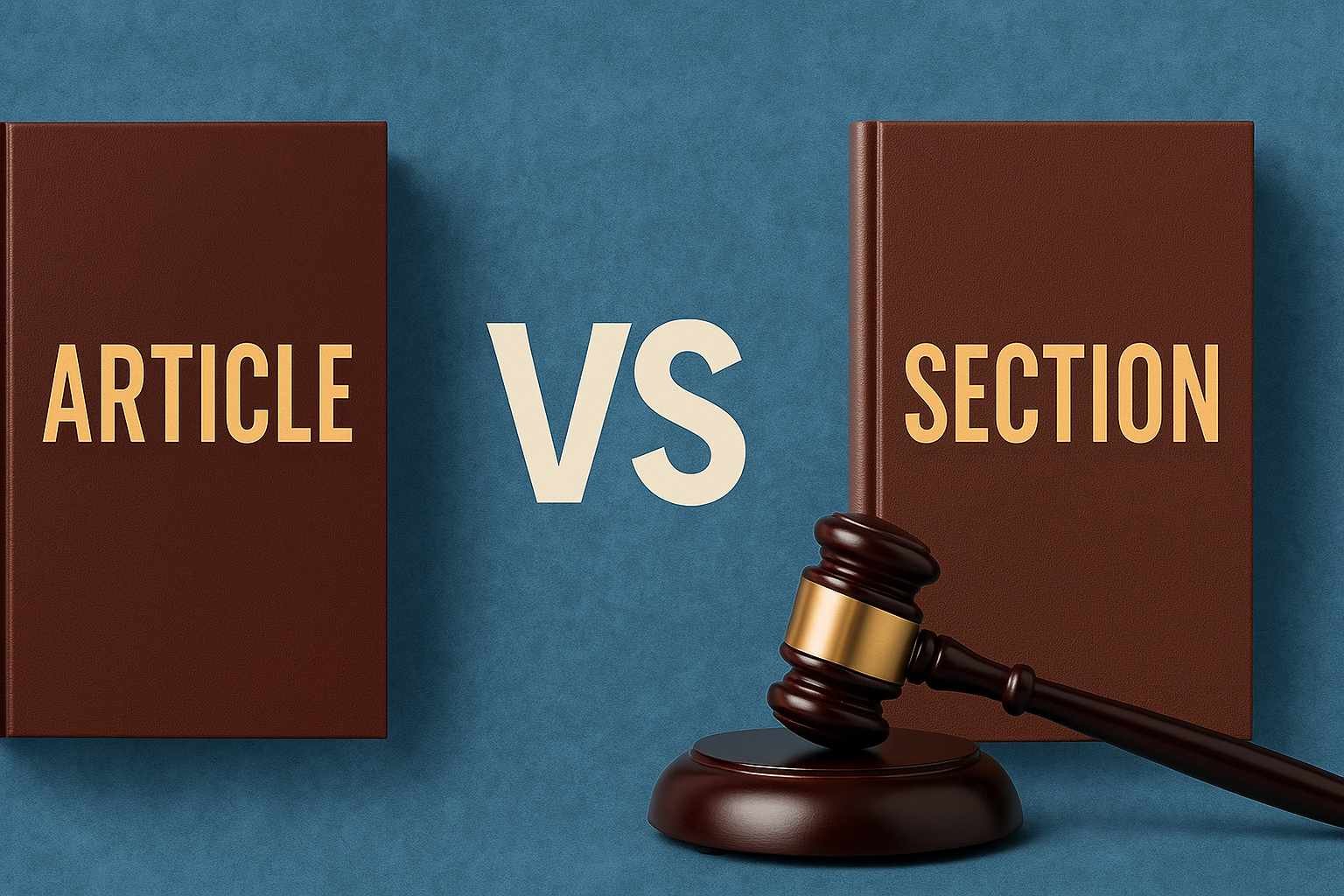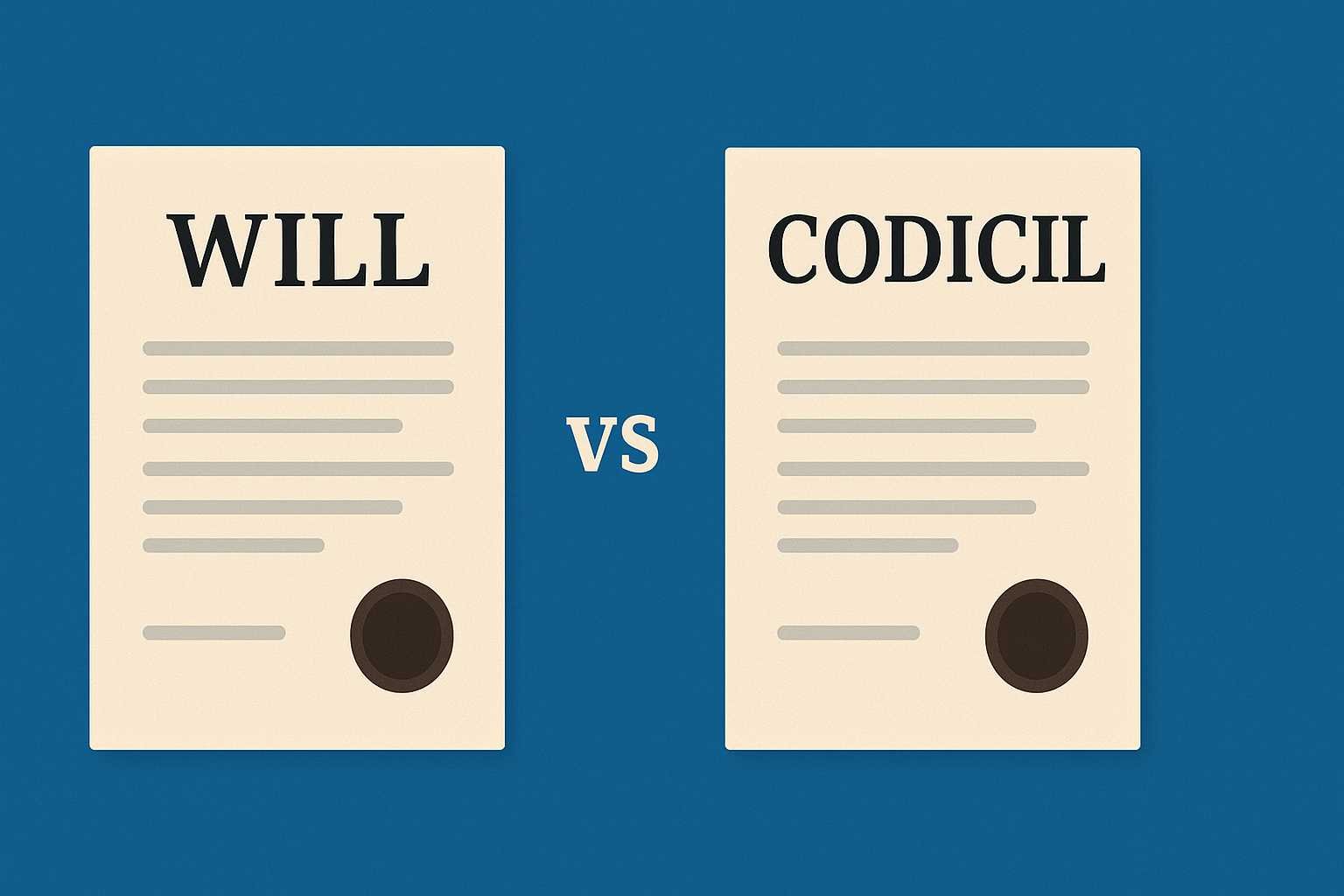On this page you will read detailed information about Kidnapping And Abduction Sections 359 To 374 Under IPC, 1860.
You have likely heard of the crimes of kidnapping and abduction, which carry severe penalties under the Indian Penal Code (IPC). As a concerned citizen, you may wonder what exactly constitutes these offenses. Sections 359 through 374 of the IPC delineate kidnapping and abduction crimes, specifying elements and punishments. To fully comprehend such criminal acts and their repercussions, continue reading this 100-word analysis. Become informed regarding the legal particulars of kidnapping and abduction by examining the applicable IPC sections. This article clearly defines these crimes and analyzes the corresponding codes to expand your understanding as an engaged community member aiming to grasp the intricacies of the law.
Overview of Kidnapping and Abduction Under the Indian Penal Code

Sections 359 to 374 of the Indian Penal Code, 1860 (IPC) deal with the offenses of kidnapping and abduction. Kidnapping refers to unlawfully taking away a person by force or deceit, while abduction refers to unlawfully taking away a person with the intention of secretly and wrongfully confining that person.
Kidnapping (Section 359-364)
Section 359 of IPC defines kidnapping as unlawfully taking away a person by force or deceit. Kidnapping may be of several types:
- Kidnapping from lawful guardianship (Section 361): Taking away a minor (<16 years for males, <18 years for females) without the consent of lawful guardian.
- Kidnapping in order to murder (Section 364): Kidnapping with the intention of murdering the victim. This is punishable with imprisonment for life or rigorous imprisonment of 10 years and fine.
Abduction (Section 363-373)
Abduction refers to taking away a person by force or deceit with the intention of wrongfully confining that person. Some important provisions under abduction are:
- Punishment for abduction (Section 363): Imprisonment of up to 7 years and fine. If the victim is under 16 years (male) or 18 years (female), the punishment may extend to 14 years.
- Kidnapping or abducting in order to subject person to grievous hurt, etc. (Section 367): If the intention is to subject the victim to grievous hurt, rape, slavery, etc., the punishment is imprisonment of 10 years to life and fine.
- Kidnapping or abducting a woman to compel her marriage, etc. (Section 366): The punishment for abducting a woman to compel her into marriage or unlawful intercourse is imprisonment of 10 years and fine.
In conclusion, Sections 359 to 374 of IPC comprehensively deal with the offenses of kidnapping and abduction, providing strict punishments for these grave crimes. Familiarity with these provisions is important to understand and prevent such offenses.
Key Differences Between Kidnapping and Abduction
Kidnapping and abduction are two distinct yet related offenses under the Indian Penal Code (IPC). While kidnapping involves taking away or detaining a person against their will, abduction refers to carrying off a person by deceitful means. There are some key differences in the definitions and punishments of these crimes:
Abduction, defined under Section 362 of the IPC, refers to taking away or carrying off a person through fraudulent means. The most essential ingredient is deceit or fraud, wherein the perpetrator obtains the custody of a person through misrepresentation or other deceitful actions. Kidnapping, on the other hand, involves forcibly taking away or detaining a person against their will, as defined under Section 359. Force or compulsion is the defining element.
In abduction, the consent of the victim is obtained through fraud or deception. In kidnapping, the victim’s consent is immaterial as they are confined against their will. Abduction requires an intention to secretly or wrongfully confine a person, while kidnapping only requires an intention to confine.
The punishment for kidnapping under Section 363 is imprisonment up to 10 years, while abduction under Section 362 carries a maximum of 7 years. Kidnapping for ransom under Section 364-A, however, is punishable with death or life imprisonment and fine.
To summarize, while abduction and kidnapping are both serious offenses involving illegal restraint or confinement of a person, there are distinct differences in definitions, essential ingredients, intentions, and punishments under the IPC. Prosecutors must be careful to apply the appropriate charges based on these nuances.
Punishments for Kidnapping Under Sections 359-368
Sections 359 to 363 of the Indian Penal Code (IPC) lay down the punishment for kidnapping and abduction. The punishment varies based on the age and gender of the victim.
Kidnapping (Section 359)
Whoever kidnaps any person with the intent to secretly and wrongfully confine that person against their will shall be punished with imprisonment of either up to 7 years and fine, or up to 10 years and fine.
Kidnapping from lawful guardianship (Section 361)
Whoever takes or entices any minor under 16 years of age or any person of unsound mind, out of the keeping of the lawful guardian of such minor or person of unsound mind, without the consent of such guardian, is said to kidnap from lawful guardianship. The punishment is imprisonment of up to 7 years and fine.
Kidnapping or maiming a minor for purposes of begging (Section 363A)
Whoever kidnaps any minor or, not being the lawful guardian of a minor, obtains the custody of the minor, in order that such minor may be employed or used for the purpose of begging shall be punishable with imprisonment of up to 10 years and fine.
In the previous post, we had shared information about Legal Education In India: Progress, Problems, And Potential, so read that post also.
Kidnapping for ransom, etc. (Section 364A)
Whoever kidnaps or abducts any person for the purpose of murder or ransom or subjecting a person to grievous hurt, or slavery, or to the lust of any person shall be punished with death or imprisonment for life and fine.
Wrongful confinement for three or more days (Section 368)
Whoever, without lawful authority, keeps any person in confinement knowing that a writ for the liberation of that person has been duly issued, shall be punished with imprisonment of up to 3 years in addition to any other punishment to which he may be liable.
The punishments prescribed under these sections aim to curb the offences of kidnapping and abduction, thereby safeguarding the liberty and security of individuals.
Aggravated Forms of Kidnapping and Associated Penalties
Kidnapping is considered an aggravated offense under certain circumstances, such as:
- Kidnapping for ransom or demanding valuable property as a condition of release
- Kidnapping with intent to kill or wrongfully confine the victim
- Kidnapping of a minor (under 16 years of age)
- Kidnapping of a woman with intent to compel her for marriage
The IPC lays out strict punishment for these aggravated kidnappings. For kidnapping a minor, the penalty is life imprisonment or up to 7 years and a fine. Kidnapping for ransom is punishable by death or life imprisonment and fine. Kidnapping with intent to kill incurs either the death penalty or life imprisonment, along with a fine.
These harsh penalties aim to curb such cruel acts and protect the victims. However, some critics argue that the death penalty is too harsh and irreversible a punishment. There have also been cases where the courts have reduced sentences due to the long time elapsed since the offense or the offender’s age and infirmity.
Additional Considerations
The law also considers other factors when determining appropriate punishment, such as:
- The age and gender of the victim
- The relationship between the offender and victim
- The purpose or motive behind the kidnapping
- The manner in which the victim was confined or transported
- The duration of captivity and the treatment of the victim
- The physical and mental trauma suffered by the victim
- The offender’s criminal history and likelihood of reform
While the IPC aims to punish kidnapping strictly, it also allows for discretion based on the specifics of each case. The ultimate goal is justice and reform rather than retribution alone. With reasonable restrictions and humane considerations, the law seeks to curb this reprehensible criminal act.
Sections on Abducting a Woman to Compel Her Marriage
Section 366 of the Indian Penal Code, 1860 lays down the punishment for kidnapping, abducting or inducing a woman to compel her marriage, etc. According to this section, whoever kidnaps or abducts any woman with intent that she may be compelled, or knowing it to be likely that she will be compelled, to marry any person against her will, or in order that she may be forced or seduced to illicit intercourse, or knowing it to be likely that she will be forced or seduced to illicit intercourse, shall be punished with imprisonment of either description for a term which may extend to ten years, and shall also be liable to fine.
This section aims to protect the liberty and dignity of women. The essential ingredients of this offence are:
- Kidnapping or abducting a woman: The accused must take away a woman out of the keeping of her lawful guardian without her consent.
- Intent: The kidnapping or abduction must be done with the intention or knowledge that the woman is likely to be compelled to marry against her will or forced to illicit intercourse.
- Compulsion: The end result contemplated by the accused must be to compel the woman to marry against her will or to seduce her to illicit intercourse.
Mere kidnapping or abduction, or taking away of a woman, or detaining her against her will, is not sufficient to constitute an offence under this section. There must be in addition the intention or knowledge on the part of the offender that the kidnapping, abduction or detention is likely to result in compelling the woman to marriage or illicit intercourse.
The explanation appended to the section provides that it is immaterial whether the woman is subjected to compulsion or seduced to illicit intercourse, or not. The offence is complete as soon as the accused kidnaps or abducts the woman with the necessary intention or knowledge. The actual compulsion or seduction need not take place. The punishment under this section is imprisonment up to 10 years and fine. The offence under this section is cognizable, non-bailable, non-compoundable and triable by Court of Session.
Abducting a Child Under 10 Years for Begging or Slavery
According to Sections 363 to 373 of the Indian Penal Code, 1860, abducting or kidnapping a child under the age of 10 years with the intent to cause the child to beg or to commit slavery is an offense.
A person who abducts any child under the age of 10 years with the intention of causing such child to beg or making a child a slave, shall be punished with imprisonment of either description for a term which may extend to 10 years, and shall also be liable to fine. The abduction or kidnapping of a child for the purpose of begging or slavery is considered an aggravated form of kidnapping, owing to the young age and vulnerability of the victim.
The essential ingredients of this offense are:
- The accused abducted or kidnapped a child.
- The child was under the age of 10 years at the time of kidnapping or abduction.
- The accused kidnapped or abducted the child with the intention of causing the child to beg or with the intention of making the child a slave.
- The intention of the accused at the time of kidnapping or abduction must be to compel the child to beg or to use the child as a slave. Merely kidnapping a child would not amount to an offense under this section.
The term ‘slavery’ refers to the condition of a person over whom any or all of the powers attaching to the right of ownership are exercised. It includes debt bondage and serfdom, as well as trafficking of persons for the purpose of forced labour or services, slavery or practices similar to slavery. The expression ‘to cause a person to beg’ means to force, compel or induce a person by threat, coercion or deception to beg.
Abducting or kidnapping a child under 10 years of age is a grave offense as it deprives the child of the care and protection of his guardians, exposes the child to various forms of abuse and endangers the growth and development of the child. The young age of the victim makes the child especially vulnerable, impacting the child physically, mentally as well as psychologically.
Kidnapping for Ransom and Related Offenses
Kidnapping for ransom refers to unlawfully confining or taking away a person against their will with the intent to demand money, property or any other valuable as a condition for release. Under Sections 359 to 374 of the Indian Penal Code, 1860, kidnapping and abduction are serious criminal offenses.
Kidnapping for Ransom (Section 364A IPC)
According to Section 364A, whoever kidnaps or abducts any person for the purpose of extorting ransom or property, or constraining the government or any foreign state or international inter-governmental organization to do or abstain from doing any act shall be punished with imprisonment for life, and shall also be liable to fine. The offense is non-bailable and cognizable.
The essential elements of the offense are:
- Unlawful confinement or taking away of a person against their will.
- The intention must be to demand ransom, money, property or any other valuable thing.
- Threat to cause death or hurt to such person or any other person.
Punishment for Kidnapping with Intent to Murder (Section 364 IPC)
As per Section 364, whoever kidnaps or abducts any person with intent to murder shall be punished with rigorous imprisonment for a term which may extend to ten years, and shall also be liable to fine. The offense is cognizable, non-bailable and triable by Court of Session.
The prosecution must prove the following to establish the offense:
- The accused kidnapped or abducted the victim.
- The kidnapping or abduction was done with the intention to secretly and wrongfully confine the victim.
- The intention was to murder the victim. The intention to murder must exist at the time of kidnapping or abduction.
To summarize, kidnapping and abduction are grave criminal acts that violate personal liberty and security. Sections 359 to 374 of the IPC provide strict punishment for such offenses to act as a deterrent and uphold the right to life and personal freedom.
Recent Trends and Case Studies on Kidnapping and Abduction
Kidnapping and abduction are serious criminal offenses that violate a person’s basic human rights and freedom. According to recent reports by the National Crime Records Bureau (NCRB), there has been an alarming rise in kidnapping and abduction cases in India. In 2019, a total of 99,034 cases of kidnapping and abduction were registered, reflecting an increase of over 22% from 2018.
Some of the major reasons attributed to this rise are:
- Economic gains: Kidnapping for ransom remains the top motive. Victims are often from affluent families and are kidnapped to extract money.
- Revenge or punishment: Victims are abducted to seek revenge or punish them over personal, family or business disputes.
- Trafficking: Victims, especially women and children, are kidnapped for human trafficking and forced into labor, prostitution or marriage.
- Political reasons: Victims are kidnapped to further the interests of terrorist outfits or for political propaganda and mileage.
Case Study 1: The abduction and murder of Rinku Sharma
In 2021, a 12-year-old boy named Rinku Sharma was kidnapped and brutally murdered in Delhi over a business rivalry. Five men allegedly kidnapped him to take revenge on his family over a dispute related to their sweet shop. His mutilated body was found a day after he went missing. All accused were arrested and the case is pending trial.
Case Study 2: Kidnapping of Rubaiya Sayeed
In 1989, Rubaiya Sayeed, daughter of the then Home Minister Mufti Mohammad Sayeed, was kidnapped by militants of the Jammu Kashmir Liberation Front (JKLF). Their demand was the release of five of their militants from prison. The kidnappers kept her captive for five days before releasing her unharmed in exchange for the release of their comrades. This incident brought the Kashmir insurgency to the center stage and highlighted the growing threat of militancy in the valley.
Kidnapping and abduction are grave crimes that violate personal liberty and security. Stricter laws, effective enforcement and creating public awareness can help curb such offenses and make society safer.
FAQs on Kidnapping and Abduction Laws in India
There are several frequently asked questions regarding the laws on kidnapping and abduction in India.
According to Section 359, kidnapping is unlawfully taking or keeping a minor (below 18 years) out of the keeping of lawful guardian against their will. It includes abducting or inducing a minor to move from their home or keeping them in detention.
The essential ingredients for kidnapping are:
I) Unlawfully taking or keeping a minor out of the lawful keeping of guardian.
II) It must be against the will of the minor or guardian.
III) The person kidnapped must be a minor, i.e. below 18 years of age.
IV) There must be force or fraud involved in taking or keeping the minor.
The punishment for kidnapping varies based on the gender and age of the victim:
I) Kidnapping of a minor: Up to 7 years imprisonment and fine (Section 363 IPC).
II) Kidnapping of a woman to compel her marriage: Up to 7 years imprisonment and fine (Section 366 IPC).
III) Kidnapping for ransom or to compel restoration of any property: Up to life imprisonment and fine (Section 364 IPC).
Abduction refers to unlawfully taking away or carrying off a person by force or deceit. According to Section 362, abduction is taking away a person without their consent. The essential ingredients are:
i) Taking away a person without consent.
ii) Use of force, fear, fraud or deceit to take away the person.
iii) Person abducted can be major or minor, male or female.
The punishment for abduction is imprisonment up to 7 years and fine. Abduction of a woman to compel her marriage is punishable with imprisonment up to 10 years and fine under Section 366 IPC.
Disclaimer
The information and services on this website are not intended to and shall not be used as legal advice. You should consult a Legal Professional for any legal or solicited advice. While we have good faith and our own independent research to every information listed on the website and do our best to ensure that the data provided is accurate. However, we do not guarantee the information provided is accurate and make no representation or warranty of any kind, express or implied, regarding the accuracy, adequacy, validity, reliability, availability, or completeness of any information on the Site. UNDER NO CIRCUMSTANCES SHALL WE HAVE ANY LIABILITY TO YOU FOR ANY LOSS OR DAMAGE OF ANY KIND INCURRED AS A RESULT OR RELIANCE ON ANY INFORMATION PROVIDED ON THE SITE. YOUR USE OF THE SITE AND YOUR RELIANCE ON ANY INFORMATION ON THE SITE IS SOLELY AT YOUR OWN RISK. Comments on this website are the sole responsibility of their writers so the accuracy, completeness, veracity, honesty, factuality and politeness of comments are not guaranteed.
So friends, today we talked about Kidnapping And Abduction Sections 359 To 374 Under IPC, 1860, hope you liked our post.
If you liked the information about Kidnapping And Abduction Sections 359 To 374 Under IPC, 1860, then definitely share this article with your friends.
Knowing about laws can make you feel super smart ! If you find value in the content you may consider joining our not for profit Legal Community ! You can ask unlimited questions on WhatsApp and get answers. You can DM or send your name & number to 8208309918 on WhatsApp











